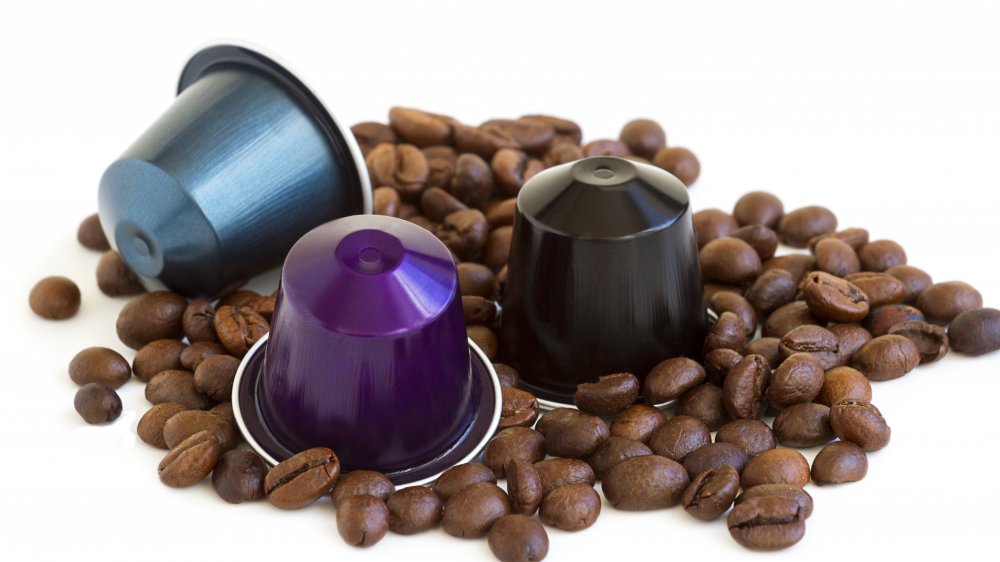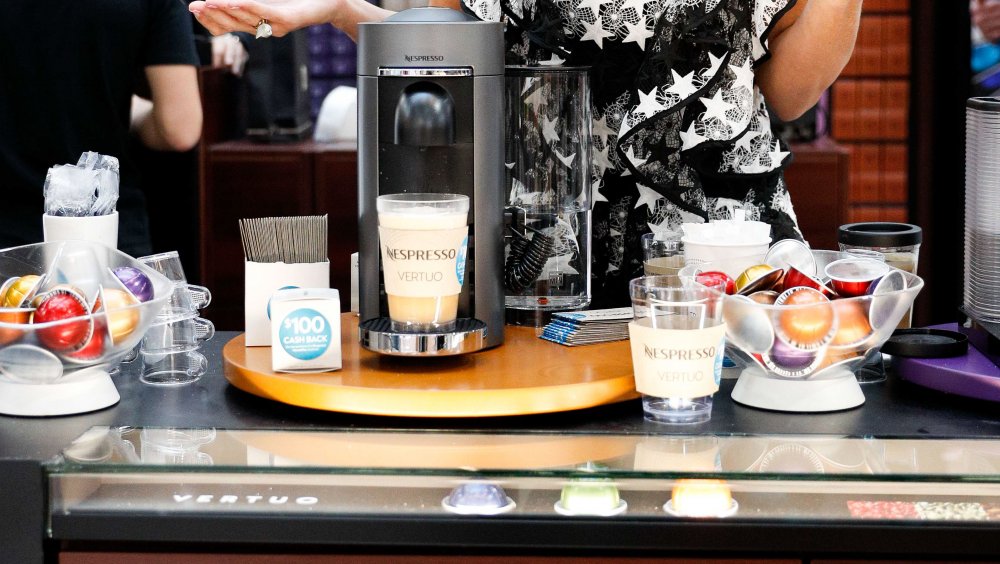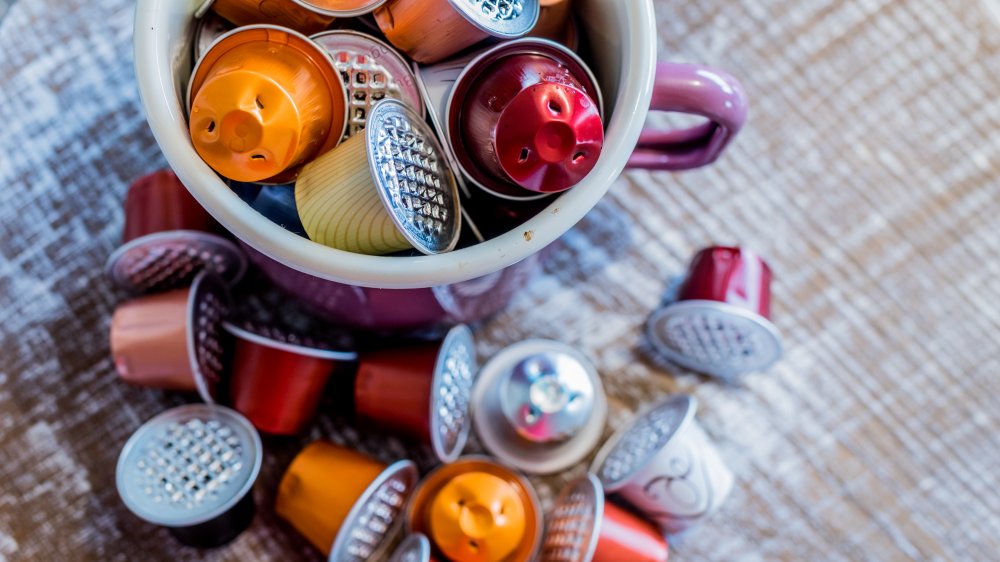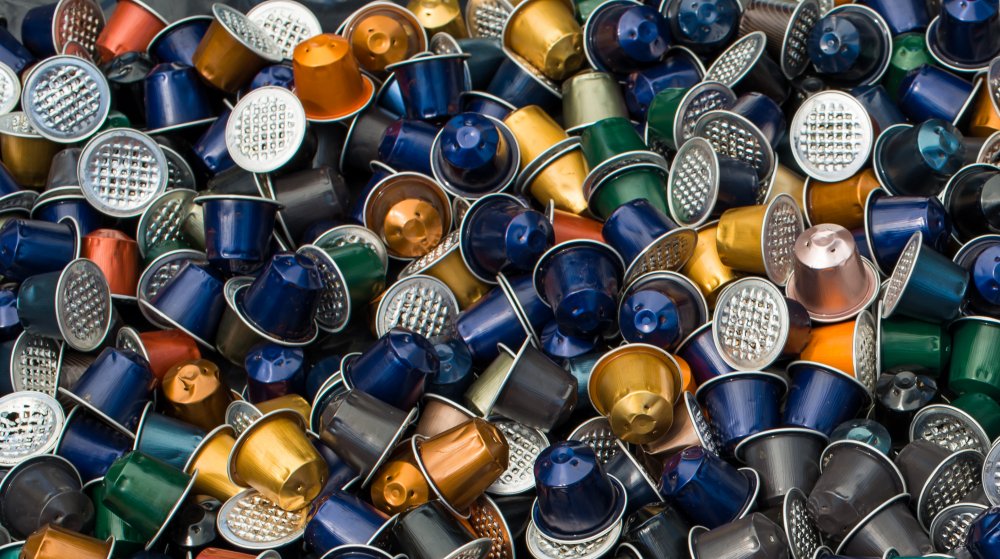Surprising Facts About Nespresso Coffee Capsules
When Nestle engineer Eric Favre took a trip to Rome in 1975, no one would have imagined that he would sow the seeds for an invention that could eventually marry the convenience of Mr. Coffee with the taste and quality of roasts only accessible at an Italian espresso bar. A year after that trip, Nestle was able to file a patent for Favre's idea and a coffee revolution was born. Today, The Guardian says 14 billion Nespresso capsules are sold every year online and through stylish retail outlets.
The Nespresso's aluminum-clad capsules have experienced their share of controversy. The company faces criticism over the environmental impact of its coffee capsules (more on that later), and its coffee occupies a spot between people that think the coffee is too expensive and those that think it isn't good enough. But like them or love them, today's sleek Nespresso machines and their ubiquitous capsules have been able to elevate the obligatory morning java into a beverage enjoyed by connoisseurs in a way that no other coffee machine has.
Nespresso machines don't actually make espresso
Nespresso machines and their pods are quick, they're convenient, they make relatively good (and inexpensive) cups of coffee. But if there's one thing this sexy European coffee system doesn't produce, it's espresso. The Coffee Blog points out that when Nestle's inventor Eric Eavre created his now-ubiquitous luxury coffee machine, he didn't reproduce it the way traditional espressos are made. Instead, he invented a new way to make coffee that managed to produce something that tasted close to a strong shot of traditional Italian coffee but wasn't quite as intense.
And because they produce good cups of coffee so quickly, some people have also actually assumed that Nespresso pods contain instant coffee, but they don't. What the pods do contain is finely-ground coffee beans that produce good coffee quickly because they are subjected to high-pressure water jets.
Nespresso capsules are harder to recycle than they look
The ease and convenience of using the Nespresso system and its capsules come with a price. Because the coffee comes in disposable containers made from a combination of plastic and aluminum, these pods are neither biodegradable nor can they be recycled as easily as it might the first appear. Back in 2016, the company's former CEO, Jean-Paul Gaillard told Australian Broadcasting Corporation (ABC) that "recycling doesn't really work" unless "you are very close to a smelting factory which is never the case." The because "aluminum capsules have to be shredded, the coffee has to be taken away with water, the varnish to be burnt and aluminum has to be re-smelted again. You need a lot of transportation and energy."
When pods are not recycled properly, ABC says pods can take between 150 to 500 years Nespresso capsules to degrade in a landfill. The company TerraCycle has tried to incentivize long-distance recycling by offering to for shipping the capsules and pledging to donate to a recycler's chosen charity or school.
Nespresso capsules are better for the environment than other coffee options
Alf Hill, professor of chemical engineering at the University of Bath, says that if you consider the entire environmental footprint of our coffee obsession from where and how the bean is grown to the time its grounds are sent off to be recycled, instant coffee is the most environmentally friendly option while traditional espresso actually is the worst.
"The impact, such as greenhouse gas emissions, water, and fertilizer use, mostly occurs where the coffee is grown," Hill tells Wired. And surprisingly, "Capsules tend to need less coffee input to make a single drink and so their overall impact can be lower even though we see more waste when we throw them away." So if Nespresso is able to convince its fans to bump up their capsule recycling rate, which in 2019 was just at 25 percent, it may actually have a winning coffee formula in its hands.



